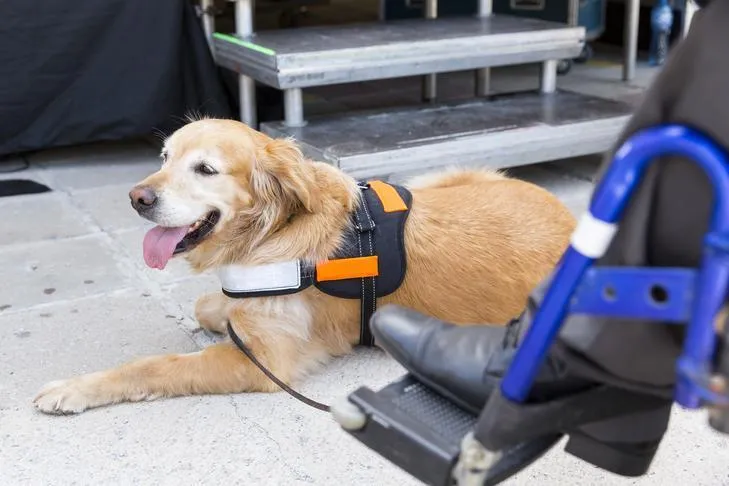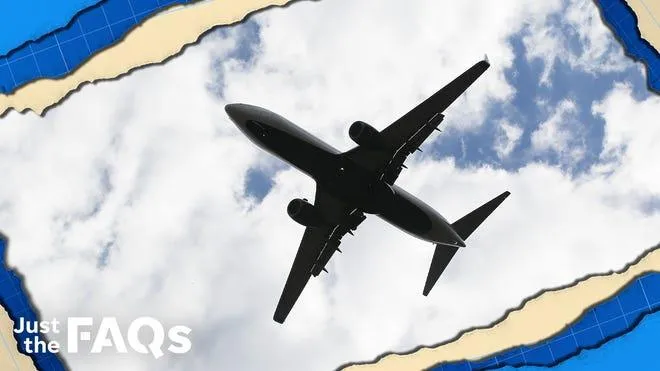A Comprehensive Guide to Flying with Your Service Dog
If you rely on your service dog to assist with a disability, traveling by air with your canine companion is an important question. As a service dog handler myself, I’ve faced situations where understanding airline policies was critical. Here’s everything you need to know about flying with your service dog.
What Is a Service Dog?
- A service dog is specially trained to perform tasks that mitigate an owner’s disability, such as guiding a blind person, detecting seizures, pulling a wheelchair, or calming anxiety attacks.
- Service dogs are not pets – they are working animals protected under the Americans with Disabilities Act (ADA).
- True service dogs are trained to behave properly in public and should not be distracted from their duties. Petting or playing with a service dog working is frowned upon.
From my experience as a service dog handler, correct public access training is important. A well-behaved service dog causes less issues for their handler and other passengers when flying. If your dog’s behavior needs improvement, work with a trainer before travel.
What paperwork do I need?
Any service dog requires no official registration, certification, or license. However, airlines may ask for one or more of the following:
- A letter from your doctor or medical professional detailing your disability and how the dog mitigates it.
- Proof of vaccinations should be kept in case asked.
- Many handlers get their dog vested or use a harness identifying them as a service animal to avoid hassle.
Keep all relevant paperwork easily accessible at the airport. Explain your dog is a trained service animal if asked, and do not provide unnecessary personal medical details to maintain privacy.
Can an airline deny my service dog?
No, but there are limits. Airlines cannot deny a service dog due to breed (unlike emotional support animals) as long as the dog is:

- Trained to behave properly.
- Does not pose a direct threat to health or safety of others.
- Is able to fit in the passenger’s footspace without obstructing aisles or exits.
Basically, if the dog meets ADA service dog standards, the airline must accommodate them for free like any assistive device. However, in rare situations of proven misbehavior or health risk cases, the team could potentially be denied – so work hard to avoid these issues.
What if others have allergies?
While allergies are valid, the rights of those with disabilities still take legal priority per the ADA. Airlines will make reasonable efforts like seat changes if possible rather than denying a service dog. However, if a severe allergy poses an actual medical risk rather than mere discomfort, alternative arrangements may need exploring on a case-by-case basis. Overall proper training and hygiene go a long way in such situations.
Where can the service dog sit?
Service dogs must be allowed to accompany their handlers and sit at their feet on the floor of the aircraft cabin. The dog cannot occupy a passenger seat that could be sold, as only service dogs – not pets – have public access rights. However, if space permits or an understanding passenger offers to share footspace, some aircraft allow a small service dog to sit on its owner’s lap rather than under the seat. Communication with the airline is key to smooth travels.
But is it stressful on the dog?
You’re right to consider your loyal companion’s comfort too. Long flights can indeed wear on a service dog, as they must remain focused amidst sharp noises, busy crowds and unfamiliar spaces. From my experience, it helps to:
- Ensure your dog gets adequate exercise before the flight.
- Bring favorite chew toys or blankets for comfort.
- Request a row with little foot traffic if possible.
- Praise and reward calm behavior to encourage relaxation.
With positive reinforcement training, most service dogs handle air travel well. But don’t hesitate to request a break in less busy areas if needed. Your dog’s welfare is as important as your own needs being met.

What about international travel?
Things can get kinda complex flying abroad with a service dog. Regulations vary greatly between countries. Definitely research destination laws well in advance and prepare accordingly with things like:
- Health certs for the specific country including vaccines.
- Proper ID like a service dog vest.
- Contact info for local veterinarians or dog-friendly lodging.
Also, consider if the dog has experience with new languages, currencies, traffic etc. Extra socialization trips could help. At the end of the day, carefully planning your foreign service dog travels can prevent unwanted hassle down the line.
In summary, with thorough preparation of paperwork, training and communication, traveling by air with your service dog friend is absolutely possible for those who need that support. All it takes is understanding regulations and teamwork between handler and canine to make flights stress-free for both. Let me know if any other service dog travel questions come up!
Requirements for Flying with a Service Dog
| Requirement | Details |
|---|---|
| Proper identification | Service dogs must have appropriate tags or other identification indicating they are a service animal. |
| Under handler’s control | The service dog must be housebroken and under the full control of its handler at all times using voice, signal, or other effective commands. |
| Well-behaved | The service dog must behave appropriately in public and not exhibit disruptive behaviors such as barking, growling, or other vocalizations. |
| Health documentation | Proof of current vaccinations and veterinary health records may be required depending on the destination. |
| Avoid overcrowding | Plan to board early and request bulkhead seating to allow room for comfortable positioning of the service animal. |
FAQ
-
Can I travel with my service dog on an airplane?
Yes, you can definitely bring your service animal with you on a plane. Under the Americans with Disabilities Act (ADA), service animals are allowed access to any place the public is allowed to go, which includes airplanes. However, airlines may ask you to provide documentation proving your animal is trained to behave appropriately in public.
-
What paperwork do I need for my service dog to fly?
The main paperwork you’ll need is a letter from your healthcare provider stating that you have a disability and your service animal is needed to assist you. The letter shouldn’t reveal private medical details. You may also need to show ID and vaccination records for your dog. It’s best to check your airline’s specific policy and give them advance notice that you’ll be traveling with a service animal.

-
Can my service dog sit on my lap on the plane?
Perhaps. While small dogs are usually permitted on an owner’s lap, large service dogs are typically required to sit on the floor at your feet due to safety regulations. However, every airline has its own regulations regarding service animal size limits. Basically, check with your airline before assuming Fido can sit in your lap for takeoff and landing. Clear communication helps avoid issues.
-
Is my service dog required to wear a vest?
Strangely enough, there is no law stating that a service dog needs to wear a vest. Technically, a vest isn’t mandatory but it can sort of help identify your dog as a service animal working to assist you. On the other hand, a well-trained dog doesn’t necessarily need a vest if its behavior shows it’s under your control. Overall, wearing some form of identification, whether a vest or collar, is a good idea but not legally obligatory.
-
What happens if my service dog acts up on the plane?
If your service dog is disruptive like barking excessively or bothering other passengers, you may be asked to get the dog under control or it may have to be removed from the cabin. The dog’s behavior must not interfere with airplane operations or cause disturbances. You’re responsible for keeping your service animal well-behaved at all times. Failure to do so could result in you and your dog being denied boarding on future flights. So it’s in your best interest to ensure proper training.
-
Can my service dog eat while on the plane?
Ordinarily, service dogs should not eat during the flight for health and sanitation reasons. However, if the animal requires in-flight meals as part of its treatment plan, you may need special pre-approval and clean-up provisions from the airline. Unless there are mitigating medical conditions, it’s best to feed your service dog before or after the trip and use plastic bags to dispose of any waste in route. Keeping the cabin neat helps maintain a good rapport with passengers and crew.
-
Am I allowed to request seat preference for my service dog?
Sadly, there is no federal law requiring airlines to let service dog handlers sit in preferred seats like bulkhead rows or exit aisles. Airlines have some discretion here based on a “reasonable accommodation” standard. It doesn’t hurt to kindly ask, provide documentation if needed, and explain why your seat request is necessary. Yet there are no guarantees. As long as they don’t flat-out refuse your dog passage, the airline just has to make the overall flying experience accessible.

